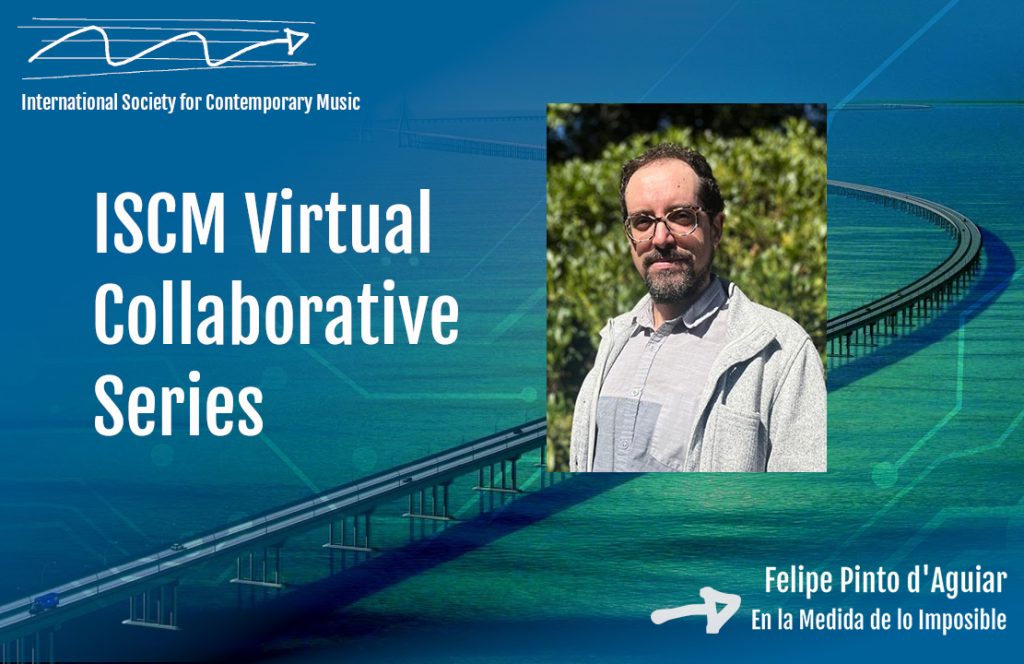Felipe Pinto d’Aguiar: En la Medida de lo Imposible

The works of Felipe Pinto d’Aguiar (b. 1982) have been regarded as possessing “emotional drive and intensity” [The Sydney Morning Herald]. Originally from Santiago de Chile, he has been involved in projects in more than fifteen countries across five continents, in which he has collaborated with Arcko Symphonic Ensemble, Sound Icon, the Consort Guitarrístico, the Orquesta Sinfónica Universidad de Concepción, Ensamble Contemporáneo UC, TimeArt Studio, Names Ensemble, Boston Musica Viva, Ensamble F(r)actura, Zone Expérimentale, the Cape Town Philharmonic Orchestra, and the JACK Quartet among others. He holds a D.M.A. in Composition from Boston University, where he studied with Joshua Fineberg thanks to a Fulbright grant. Previously, he completed a Masters of Music at The University of Melbourne, working with Elliott Gyger, and was also a student of Aliocha Solovera. Described as one the “most powerful Chilean voices born in the ’70s and ’80s” [El Mercurio], he takes inspiration from various sources, including visual arts, literature, films, daily life, and the natural world. He is an Associate Professor at the School of Music & Sonic Arts at the Faculty of Arts and Architecture of Universidad Austral de Chile in Valdivia.
En la Medida de lo Imposible [as far as impossible] (2015-16) is a 16-minute ensemble work for eight musicians scored for for flute, clarinet/bass clarinet, soprano/alto saxophone, horn, violin, viola, doublebass, and percussion. According to the composer, it “aims to go beyond the expectation within a mostly continuous musical texture, which is occasionally interrupted by coordinated theatrical gestures. The piece elaborates a series of distillations of primordial sonic materials. There are re-interpretations or metaphors of these materials to the point where they become unrecognizable from their original form. The whole work has also been re transcribed a few times to create a metaphor of itself. This procedure —micro and macro at the same time— escapes my usual approach to composition and forces me to take distance from the score in order to visualize certain musical objects as if they were part of an auto-archeological site. The production of this audiovisual recording during the pandemic inspired some staging additions which reference the COVID-19 catastrophe to create an homage to the victims.”
Performed by Ensamble Contemporáneo UC
[Flute: Natalia Martorell; Clarinets: Dante Burotto; Saxophones: Miguel Ángel Villafruela; Horn: Thiago Martins; Percussion: César Vilca;
Violin: Davor Miric; Viola: Georgina Rossi; Double Bass: Carlos Arenas; Conductor: Aliocha Solovera]
Art Director: Félix Rodríguez
Director of Photography: Jaime Cáceres
Recording: José Oplustil
Mixing and Mastering: Jorge Cárdenas
